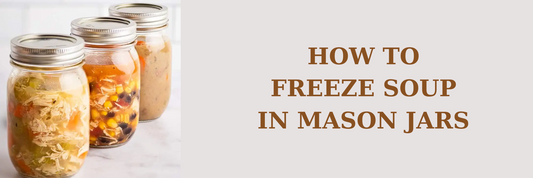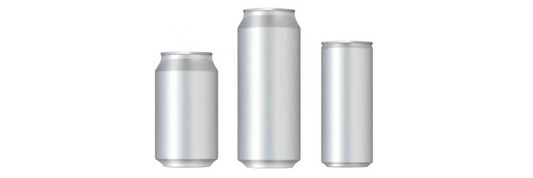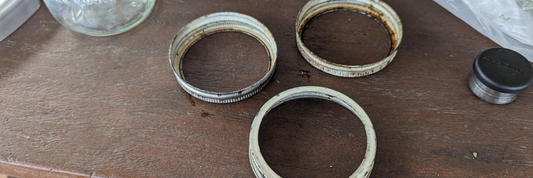What happens when you put a paper bag in the microwave? Is it harmful to food or is there a risk of fire or explosion? Although convenient, but paper bags are not recommended to use with microwave. In today article, discover the reasons what can happen and why you should not microwaving paper bags.
- What Can and Can’t You Microwave?
- Are Disposable Plates Microwaveable?
- Can Plastic Bottles Go in the Microwave?
What Will Happen If You Put a Paper Bag in Microwave?
Paper bags are a familiar sight in our lives. They're a handy and eco-friendly way to carry groceries, pack lunches, or even hold popcorn for a movie night. Their versatility makes them a go-to option for many everyday tasks. However, it’s not safe to put a paper bag in microwave.
Microwaves offer a quick and convenient way to heat up food. But the intense heat generated inside the appliance presents a significant risk when combined with paper bags. Unlike containers designed specifically for microwaves, regular paper bags simply aren't built to handle those high temperatures.
Microwaving a paper bag can lead to several potential hazards:
- Fire Risk: The biggest concern is the risk of fire. Paper bags are not designed to withstand the intense heat generated by microwaves. As the paper heats up, it can dry out, start to smoke, and eventually ignite. A fire in your microwave can not only damage the appliance but also pose a serious safety threat to your kitchen.
- Fumes and Toxins: When paper is exposed to high temperatures, it can break down and release harmful fumes and toxins. These fumes can contaminate your food, making it unsafe to eat. Additionally, inhaling these fumes can be irritating to your lungs and potentially harmful to your health.

Why Paper Bags Are Not Suitable with Microwave?
While the dangers of microwaving paper bags are clear, understanding the science behind these risks can further solidify the importance of safe food handling practices. Here's a closer look at the specific materials and properties of paper bags that make them incompatible with the intense heat environment of a microwave:
Material Composition
- Regular paper bags are primarily composed of cellulose fibers. Cellulose is a naturally occurring organic polymer, the main building block of plant cell walls. While cellulose offers several desirable properties like strength and biodegradability, it also has a significant downside – it's highly flammable.
- Under high temperatures, like those generated by a microwave, cellulose fibers can readily undergo a process called thermal decomposition. During this process, the cellulose breaks down, releasing heat and volatile gases. If the temperature continues to rise, these gases can ignite, leading to a fire.
Lack of Heat Dissipation
Unlike microwave-safe containers like glass or ceramic, paper bags are poor conductors of heat. This means they don't efficiently distribute the heat waves generated by the microwave throughout the material. Instead, the heat tends to concentrate in specific areas, creating localized hotspots within the bag. These hotspots can reach temperatures far exceeding the average temperature inside the microwave, significantly increasing the risk of fire.
Unpredictable Content
- The potential dangers of microwaving paper bags extend beyond the paper itself. During the manufacturing process, some paper bags might contain trace amounts of chemicals, inks, or dyes used for printing or strengthening the material.
- While these additives are generally safe under normal conditions, exposure to high temperatures in a microwave can cause them to break down and release harmful fumes. These fumes can not only contaminate your food, making it unsafe to eat, but can also be irritating or even hazardous if inhaled.
Alternatives to microwaving with paper bags
Since paper bags pose a significant safety risk in the microwave, it's crucial to explore alternative methods for heating your food. Below are some safe and effective options.
Microwave-safe containers
This is the gold standard for safe and efficient microwave heating. Invest in a set of microwave-safe containers made from glass, ceramic, or certain types of plastic. These materials are specifically designed to withstand high temperatures and distribute heat evenly throughout the food.
Benefits:
- Ensures even cooking and prevents hot spots that could burn your food.
- Reduces the risk of fire or harmful fumes being released.
- Comes in various sizes and shapes to accommodate different food items.
Tips:
- Look for containers with the microwave-safe symbol on the label.
- Avoid using plastic containers with cracks or scratches.
- Consider investing in containers with lids for reheating leftovers or storing food.
Transfer food to a plate
If you find yourself needing to heat food that came in a paper bag, don't microwave it directly. Here's a safe alternative:
Process: Carefully transfer the food from the paper bag to a microwave-safe plate.
Benefits:
- Removes the fire and fume risk associated with paper bags.
- Allows for even heating of your food.
Tips:
- Choose a plate large enough to hold the food comfortably.
- Avoid using plates with metallic patterns or trims, as they can spark in the microwave.
- Ensure the plate is clean and free of cracks or chips.
Opt for a Different Container from the Start
When packing lunches or preparing snacks, consider using reusable containers specifically designed for microwave use. These containers come in various shapes and sizes, allowing you to portion and store food conveniently. They offer:
- Safety and Convenience: They are safe for microwaving and eliminate the need to transfer food later.
- Durability: Reusable containers are a sustainable option that reduces reliance on disposable paper bags.
- Versatility: Many can be used for storage in the refrigerator or freezer and then reheated in the microwave.
By prioritizing safety and choosing proper alternatives, you can ditch the paper bag in the microwave and enjoy safe and efficient food heating. Remember, your health and safety are always worth the extra effort of using a microwave-safe container.
Conclusion
In conclusion, while paper bags offer convenience for carrying food, they pose a significant risk when used in the microwave. By understanding the dangers and embracing safe alternatives like microwave-safe containers or transferring food to plates, you can ensure your meals are heated safely and efficiently.









